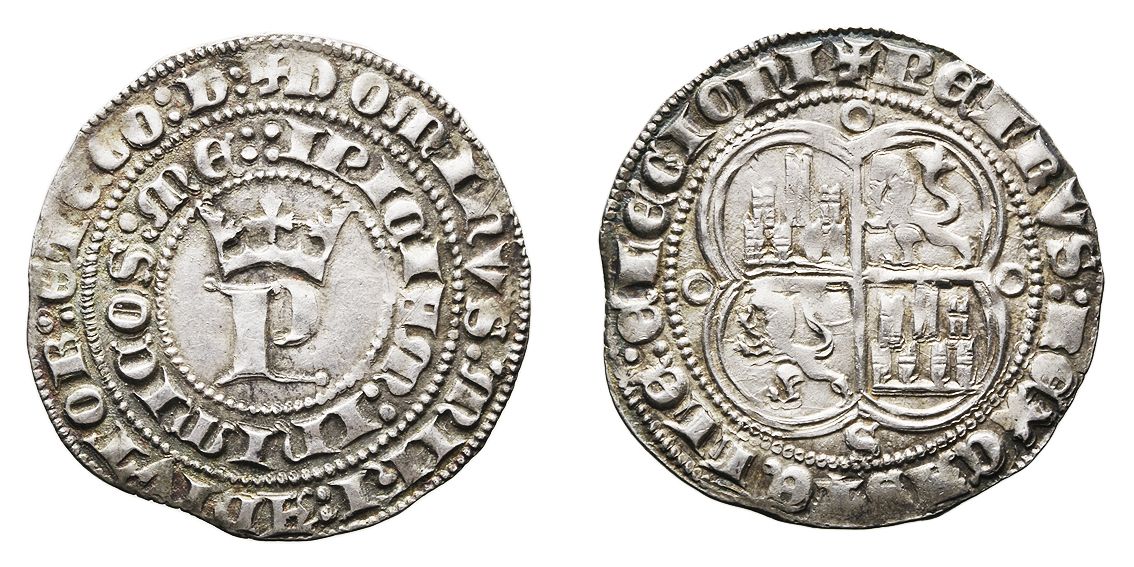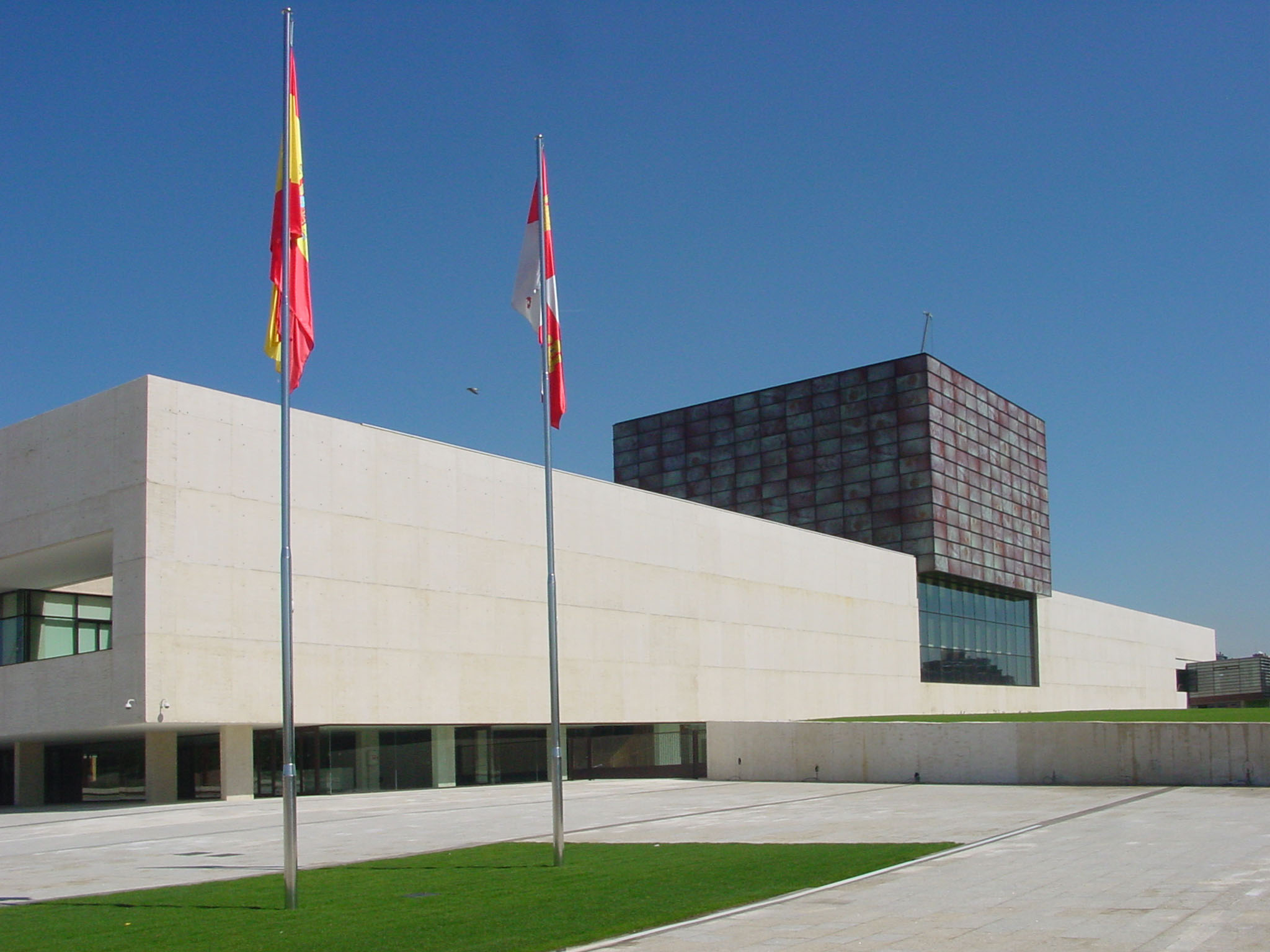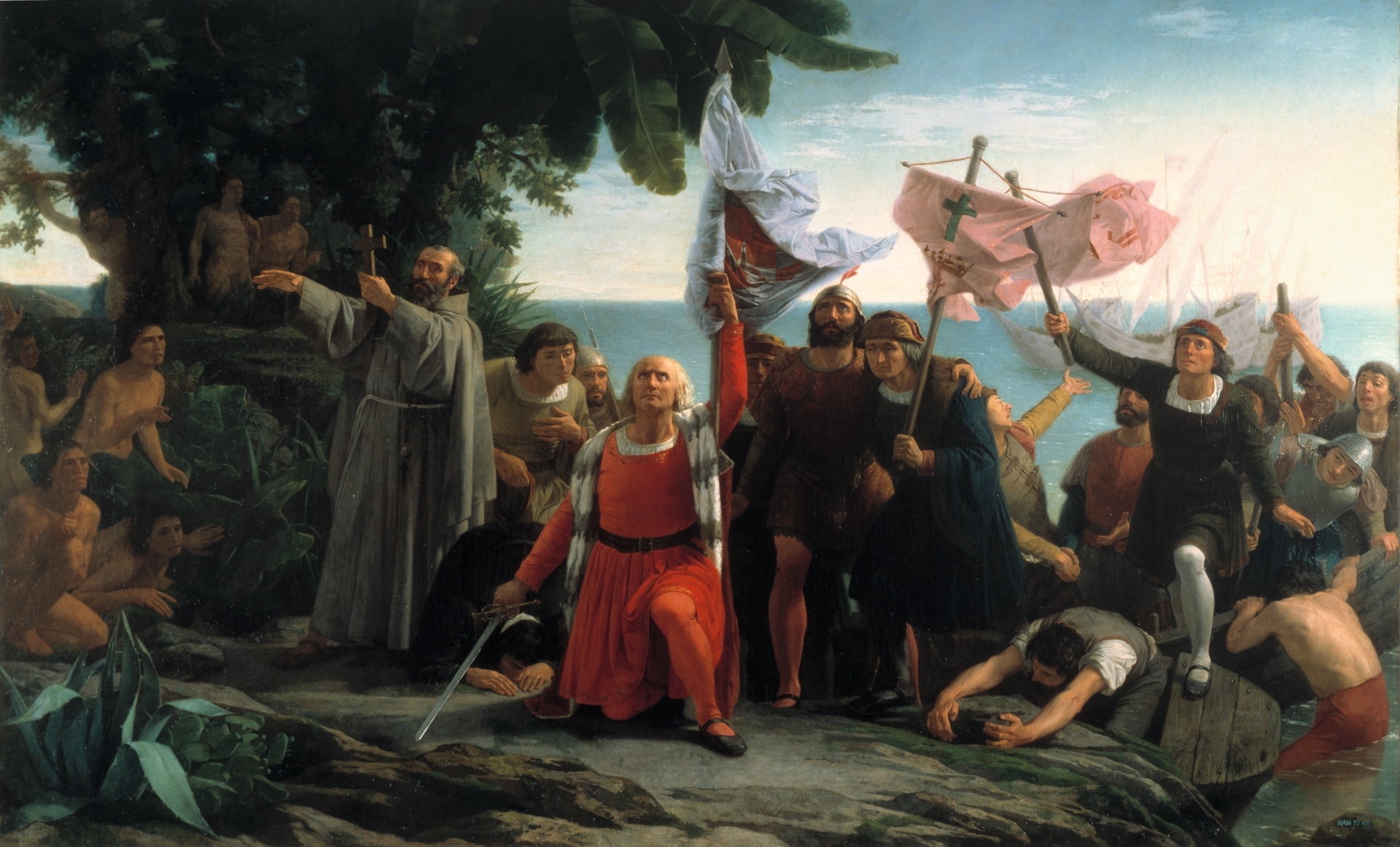|
The Execution Of The Comuneros Of Castile
''The Execution of the Comuneros of Castile'' ( es, Ejecución de los comuneros de Castilla, links=no) is a history painting by Antonio Gisbert. Gisbert painted the oil on canvas in Rome. He presented the painting to the 1860 National Exhibition of Fine Arts, where he won a first-class medal. The Congress of Deputies purchased the painting for 80,000 '' reales''. The painting depicts the execution of the three leaders of the Revolt of the Comuneros on 24 April 1521 in Villalar. Traditionally exhibited at the Palacio de las Cortes in Madrid, the painting was temporarily moved to the seat of the Cortes of Castile and León in Valladolid Valladolid () is a Municipalities of Spain, municipality in Spain and the primary seat of government and de facto capital of the Autonomous communities of Spain, autonomous community of Castile and León. It is also the capital of the province o ... in occasion of the 500th anniversary of the depicted event in 2021. References {{DEFAULTSORT: ... [...More Info...] [...Related Items...] OR: [Wikipedia] [Google] [Baidu] |
Antonio Gisbert Pérez
Antonio Gisbert Pérez (19 December 1834 – 27 November 1901) was a Spanish artist situated on the cusp between the realist and romantic movements in art. He was known for painting pictures of important events in a country's history in a realistic style, yet clearly with a political aim as well; his variance in styles puts him in the Spanish eclectic school of painters. He generally tried to promote liberal causes in his politics and paintings. Career Gisbert was born in Alcoy on December 19, 1834. He began his artistic studies at the Real Academia de Bellas Artes de San Fernando in Madrid in 1846, working under José de Madrazo. Gisbert became the Director of the Museo del Prado in Madrid in 1868. He stayed in that position until 1873, when he resigned because of opposition to the new First Spanish Republic. He moved permanently to Paris and died there on November 27, 1901. Works * '' El fusilamiento de Torrijos y sus compañeros en la playa de Málaga'' ("The Executi ... [...More Info...] [...Related Items...] OR: [Wikipedia] [Google] [Baidu] |
Spanish Real
The ''real'' (English: /ɹeɪˈɑl/ Spanish: /reˈal/) (meaning: "royal", plural: ''reales'') was a unit of currency in Spain for several centuries after the mid-14th century. It underwent several changes in value relative to other units throughout its lifetime until it was replaced by the '' peseta'' in 1868. The most common denomination for the currency was the silver eight-''real'' Spanish dollar (''Real de a 8'') or peso which was used throughout Europe, America and Asia during the height of the Spanish Empire. History In Spain and Spanish America The first real was introduced by King Pedro I of Castile in the mid 14th century, with 66 minted from a ''Castilian mark'' of silver (230.0465 grams) in a fineness of (0.9306), and valued of 3 ''maravedíes''. It circulated beside various other silver coins until a 1497 ordinance eliminated all other coins and retained the real (now minted 67 to a mark of silver, 0.9306 fine, fine silver of 3.195 grams) subdivided into 34 ... [...More Info...] [...Related Items...] OR: [Wikipedia] [Google] [Baidu] |
1860 Paintings
Year 186 ( CLXXXVI) was a common year starting on Saturday (link will display the full calendar) of the Julian calendar. At the time, it was known as the Year of the Consulship of Aurelius and Glabrio (or, less frequently, year 939 ''Ab urbe condita''). The denomination 186 for this year has been used since the early medieval period, when the Anno Domini calendar era became the prevalent method in Europe for naming years. Events By place Roman Empire * Peasants in Gaul stage an anti-tax uprising under Maternus. * Roman governor Pertinax escapes an assassination attempt, by British usurpers. New Zealand * The Hatepe volcanic eruption extends Lake Taupō and makes skies red across the world. However, recent radiocarbon dating by R. Sparks has put the date at 233 AD ± 13 (95% confidence). Births * Ma Liang, Chinese official of the Shu Han state (d. 222) Deaths * April 21 – Apollonius the Apologist, Christian martyr * Bian Zhang, Chinese official and gener ... [...More Info...] [...Related Items...] OR: [Wikipedia] [Google] [Baidu] |
El Norte De Castilla
''El Norte de Castilla'' ("The North of Castile") is a Spanish-language daily newspaper based in Valladolid, Spain. After ''Faro de Vigo'', founded in 1853, ''El Norte de Castilla'' is one of the oldest daily newspapers in the country, tracing its origins to 1854. The main edition is published in Valladolid, but editions are published for Palencia, Salamanca, and Segovia. The paper has a widely accessed Spanish-language website and is considered to be the most reliable and influential periodical in Castile. History The newspaper can be traced to 1854, when Mariano Pérez Mínguez and Pascual Pastor created '' El Avisador'' ("The Reminder"). In 1856, this paper merged with a local competitor, '' El Correo de Castilla'' ("The Castile Courier"). ''El Norte de Castilla'' was established in April 1856 by the amalgamation of these two papers; the first issue of the newly formed paper was published on 17 October 1856. In 1870, the paper was acquired by Gaviria and Zapatero, and was sold ... [...More Info...] [...Related Items...] OR: [Wikipedia] [Google] [Baidu] |
Valladolid
Valladolid () is a Municipalities of Spain, municipality in Spain and the primary seat of government and de facto capital of the Autonomous communities of Spain, autonomous community of Castile and León. It is also the capital of the province of Valladolid, province of the same name. It has a population around 300,000 people (2021 est.). Population figures from 1 January 2013. The city is located roughly in the centre of the northern half of the Iberian Peninsula's Meseta Central, at the confluence of the Pisuerga River, Pisuerga and Esgueva rivers before they join the Duero, surrounded by winegrowing areas. The area was settled in pre-Roman times by the Celtic Vaccaei people, and then by Ancient Rome, Romans themselves. The settlement was purportedly founded after 1072, growing in prominence within the context of the Crown of Castile, being endowed with fairs and different institutions such as a collegiate church, University of Valladolid, University (1241), Court (royal), Ro ... [...More Info...] [...Related Items...] OR: [Wikipedia] [Google] [Baidu] |
Seat Of The Cortes Of Castile And León
The Seat of the Cortes of Castile and León ( es, Sede de las Cortes de Castilla y León) is a legislative building opened in 2007 for the Cortes of Castile and León, situated in the city of Valladolid. History The modern Cortes of Castile and León was first situated in the small town of Tordesillas on 21 May 1983, and then moved to Fuensaldaña Castle near Valladolid. In April 2004, work began on this new building designed by Ramón Fernández Alonso from Granada, though the final design was modified by local architects Leopoldo Cortejoso and Juan Antonio Coronado. On 14 November 2007, the building was opened by King Juan Carlos I and Queen Sophia of Spain. Around 200 guests attended, including former presidents of the regional government and incumbents of neighbouring regions. An initial €39.6 million budget rose to over €79.5 million costs by January 2009. Description Situated in the neighbourhood of Villa de Prado, the avant-garde building covers 30,000 square metres ... [...More Info...] [...Related Items...] OR: [Wikipedia] [Google] [Baidu] |
Villalar
Villalar de los Comuneros is a municipality located in the province of Valladolid, Castile and León, Spain. According to the 2004 census (INE), the municipality had a population of 449 inhabitants. In its vicinity there was a crucial defeat of the rebels in the Castilian War of the Communities in 1521, the Battle of Villalar. See also *Revolt of the Comuneros *Cuisine of the province of Valladolid The gastronomy of the province of Valladolid comprises the meals, their preparation, and the culinary habits of the province of Valladolid. It is based on barbecued and roast food, especially roasted Spanish cuisine. Wines of high qualit ... References Municipalities in the Province of Valladolid {{Valladolid-geo-stub ... [...More Info...] [...Related Items...] OR: [Wikipedia] [Google] [Baidu] |
Revolt Of The Comuneros
The Revolt of the Comuneros ( es, Guerra de las Comunidades de Castilla, "War of the Communities of Castile") was an uprising by citizens of Castile against the rule of Charles I and his administration between 1520 and 1521. At its height, the rebels controlled the heart of Castile, ruling the cities of Valladolid, Tordesillas, and Toledo. The revolt occurred in the wake of political instability in the Crown of Castile after the death of Queen Isabella I in 1504. Isabella's daughter Joanna succeeded to the throne. Due to Joanna's mental instability, Castile was ruled by the nobles and her father, King Ferdinand II of Aragon, as a regent, while Joanna was confined. After Ferdinand's death in 1516, Joanna's sixteen-year-old son Charles was proclaimed her co-monarch of both Castile and Aragon; while Joanna also succeeded as Queen of Aragon, during her co-regency with her own son, she remained confined. Charles had been raised in the Netherlands with little knowledge of Castili ... [...More Info...] [...Related Items...] OR: [Wikipedia] [Google] [Baidu] |
Congress Of Deputies
The Congress of Deputies ( es, link=no, Congreso de los Diputados, italic=unset) is the lower house of the Cortes Generales, Spain's legislative branch. The Congress meets in the Palacio de las Cortes, Madrid, Palace of the Parliament () in Madrid. It has 350 members elected by constituency, constituencies (matching fifty Provinces of Spain, Spanish provinces and two Autonomous cities of Spain, autonomous cities) by closed list proportional representation using the D'Hondt method. Deputies serve four-year terms. The presiding officer is the President of the Congress of Deputies, who is elected by the members thereof. It is the analogue to a speaker. In the Congress, MPs from the List of political parties in Spain, political parties, or groups of parties, form Parliamentary group (Spain), parliamentary groups. Groups must be formed by at least 15 deputies, but a group can also be formed with only five deputies if the parties got at least 5% of the nationwide vote, or 15% of the ... [...More Info...] [...Related Items...] OR: [Wikipedia] [Google] [Baidu] |
Oil Painting
Oil painting is the process of painting with pigments with a medium of drying oil as the binder. It has been the most common technique for artistic painting on wood panel or canvas for several centuries, spreading from Europe to the rest of the world. The advantages of oil for painting images include "greater flexibility, richer and denser colour, the use of layers, and a wider range from light to dark". But the process is slower, especially when one layer of paint needs to be allowed to dry before another is applied. The oldest known oil paintings were created by Buddhist artists in Afghanistan and date back to the 7th century AD. The technique of binding pigments in oil was later brought to Europe in the 15th century, about 900 years later. The adoption of oil paint by Europeans began with Early Netherlandish painting in Northern Europe, and by the height of the Renaissance, oil painting techniques had almost completely replaced the use of tempera paints in the majority ... [...More Info...] [...Related Items...] OR: [Wikipedia] [Google] [Baidu] |
National Exhibition Of Fine Arts (Spain)
The National Exhibition of Fine Arts (Spanish: Exposiciones Nacionales de Bellas Artes) was a regular event that took place in Spain from 1856 to 1968; usually in Madrid. These exhibitions were in the form of a competition, established by a Royal Decree from Queen Isabella II in 1853. It was the largest official exhibition of Spanish art. It was initially divided into five categories: Painting, Sculpture, Engraving, Architecture, and Decorative Arts. Painting was always considered the most prestigious category, however, and Decorative Arts was only occasional. Although the decree specified that they were to be held biennale, biennially, this was not always strictly observed. Origins and proposals The process began when it was noted by many critics that Spain was underrepresented in most international exhibitions. There were also widespread feelings that Spanish art had become decadent since the old patronage system, supported by the Catholic church and the aristocracy, had disa ... [...More Info...] [...Related Items...] OR: [Wikipedia] [Google] [Baidu] |
Routledge
Routledge () is a British multinational publisher. It was founded in 1836 by George Routledge, and specialises in providing academic books, journals and online resources in the fields of the humanities, behavioural science, education, law, and social science. The company publishes approximately 1,800 journals and 5,000 new books each year and their backlist encompasses over 70,000 titles. Routledge is claimed to be the largest global academic publisher within humanities and social sciences. In 1998, Routledge became a subdivision and imprint of its former rival, Taylor & Francis Group (T&F), as a result of a £90-million acquisition deal from Cinven, a venture capital group which had purchased it two years previously for £25 million. Following the merger of Informa and T&F in 2004, Routledge became a publishing unit and major imprint within the Informa "academic publishing" division. Routledge is headquartered in the main T&F office in Milton Park, Abingdon, Oxfordshire and ... [...More Info...] [...Related Items...] OR: [Wikipedia] [Google] [Baidu] |






